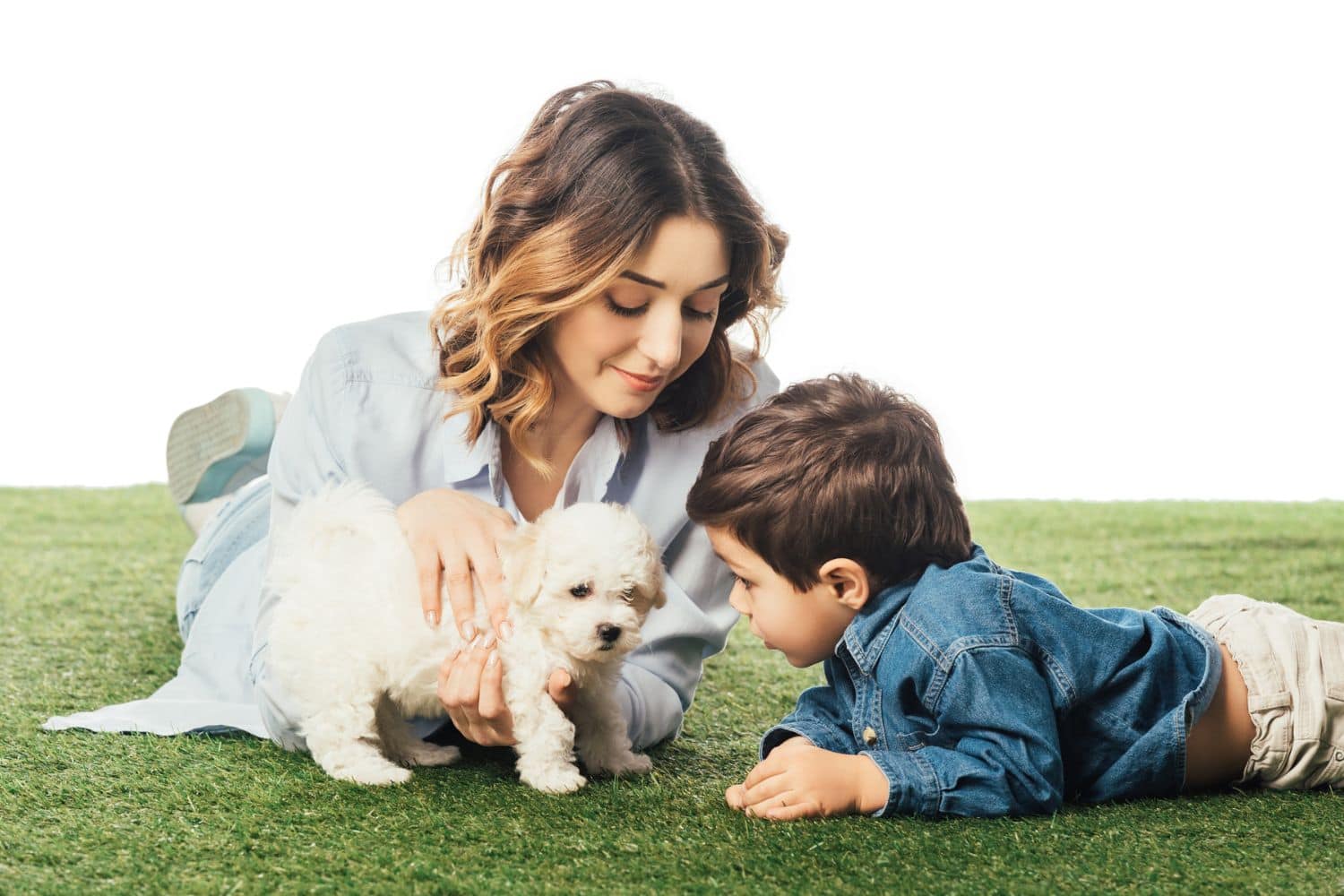Collaborative post
Bringing a new puppy into a household with a baby can be a challenging time as you try to balance both their needs, but when done properly, it can be a heartwarming experience that fosters a lifelong bond between your child and their furry friend.
A successful introduction requires careful consideration and supervision to ensure a safe and positive experience for everyone. Here are some tips to ensure it all goes smoothly.
Observation
Before introducing your baby and your puppy, it’s a good idea to observe how they each cope with the other. For example, see how your baby reacts to other people’s dogs, and if possible, observe your new puppy’s behaviour around children it knows before their actual introduction.
This gives you the opportunity to note your baby’s reaction to a dog – are they startled if it barks? Do they grab for its tail? It also allows you to gauge your puppy’s reactions to sounds and movements associated with babies. If the puppy displays signs of anxiety at loud noises or gets over-excited and bouncy around young children then you may want to consider consulting a professional trainer to address these behaviours. You may also want extra safeguards in place, such as a dog insurance policy for total peace of mind.
Create a Comfortable Environment
When it comes to the initial introduction, choose a calm environment that you can easily control. Allow the puppy to explore the baby’s scent through a blanket or babygrow before direct contact. Create a safe space for the puppy, such as a dog crate or quiet corner where they can retreat if they feel overwhelmed by the encounter.
You want both your new puppy and your baby to feel good about the meeting so keep it brief and fun for both of them. This will ensure that your puppy associates the baby with positive experiences and vice versa.
Gradual Introduction
How your puppy and your baby feel about one another is something that will last a lifetime, and a negative experience can be difficult to reverse, so don’t be tempted to rush things to get it over and done with.
Start with brief, supervised encounters where both the puppy and baby are calm. Use positive reinforcement, rewarding your puppy for calm behaviour around the baby, before gradually increasing the time spent together as both the puppy and baby get used to one another.
Supervise Every Interaction
No matter how well-behaved your puppy is, or how comfortable your baby seems around your new dog, you should always supervise interactions between your puppy and baby closely.
Both puppies and babies are naturally curious and unpredictable. Even the gentlest of puppies could accidentally hurt a baby when playing and the same is true in reverse. Keeping a close eye on things helps you to ensure that interactions remain safe and gentle.

